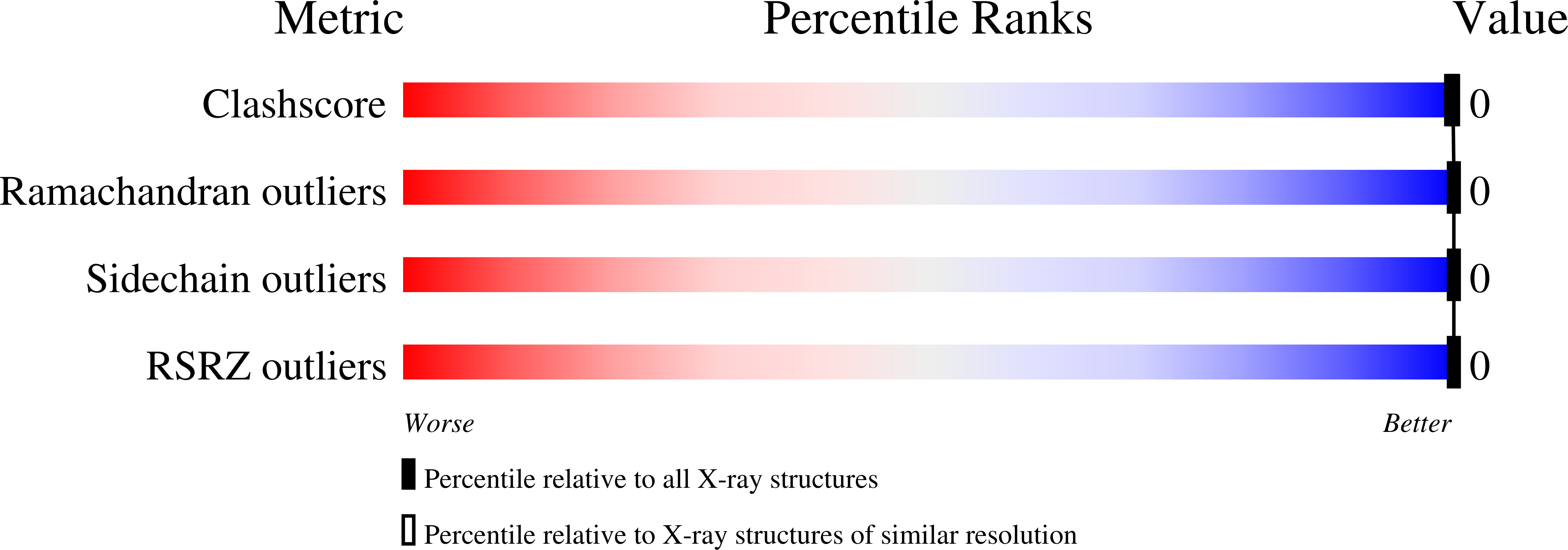Packed protein bilayers in the 0.90 A resolution structure of a designed alpha helical bundle.
Prive, G.G., Anderson, D.H., Wesson, L., Cascio, D., Eisenberg, D.(1999) Protein Sci 8: 1400-1409
- PubMed: 10422828
- DOI: https://doi.org/10.1110/ps.8.7.1400
- Primary Citation of Related Structures:
1BYZ - PubMed Abstract:
A 12-residue peptide designed to form an alpha-helix and self-associate into an antiparallel 4-alpha-helical bundle yields a 0.9 A crystal structure revealing unanticipated features. The structure was determined by direct phasing with the "Shake-and-Bake" program, and contains four crystallographically distinct 12-mer peptide molecules plus solvent for a total of 479 atoms. The crystal is formed from nearly ideal alpha-helices hydrogen bonded head-to-tail into columns, which in turn pack side-by-side into sheets spanning the width of the crystal. Within each sheet, the alpha-helices run antiparallel and are closely spaced (9-10 A center-to-center). The sheets are more loosely packed against each other (13-14 A between helix centers). Each sheet is amphiphilic: apolar leucine side chains project from one face, charged lysine and glutamate side chains from the other face. The sheets are stacked with two polar faces opposing and two apolar faces opposing. The result is a periodic biomaterial composed of packed protein bilayers, with alternating polar and apolar interfaces. All of the 30 water molecules in the unit cell lie in the polar interface or between the stacked termini of helices. A section through the sheet reveals that the helices packed at the apolar interface resemble the four-alpha-helical bundle of the design, but the helices overhang parts of the adjacent bundles, and the helix crossing angles are less steep than intended (7-11 degrees rather than 18 degrees).
Organizational Affiliation:
Ontario Cancer Institute, University of Toronto, Canada.


















